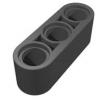Sign in to follow this
Followers
0

GBC Module - Drag & Tilt (Fixed Video)
By
LegoGBC, in LEGO Technic, Mindstorms, Model Team and Scale Modeling
-
Recently Browsing 0 members
No registered users viewing this page.
